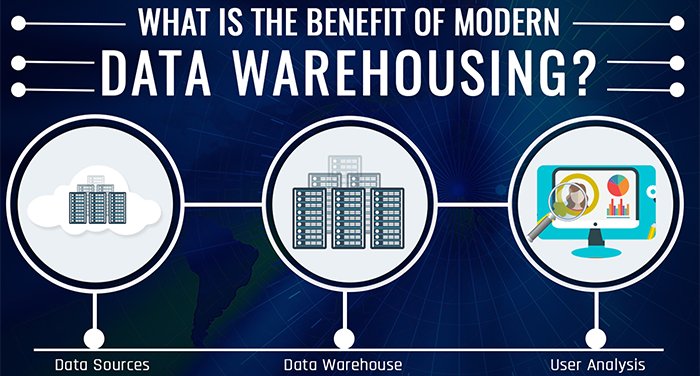
Access to relevant customer and industry information is the primary competitive advantage businesses have over their direct and indirect competitors today. It’s the smartest approach to remaining vigilant in a business environment where competition is at an all-time high.
That’s where data warehousing comes in. Data warehouses are central repositories of integrated data from one or more disparate sources used for reporting and data analysis, which—in an enterprise environment—supports management’s decision-making process.
Digitalization is integrated into the foundations of today’s business landscape, and there is no going back from here. Software companies are improving data engineering algorithms, and data analytics providers are using advanced techniques to provide better solutions to businesses. The result is much more efficient business intelligence solutions.
Businesses who are new to this trend and are skeptical about the availability of the data often inquire, “why do we need data warehousing systems?”
Data is Power
The simple answer is because data is knowledge and knowledge is power. A business with relevant information and access to useful industry insights has a greater chance of successfully striving in the business landscape and dominating the niche.
Access to Data Minimizes Risks
Entrepreneurs know that there is always some kind of risk involved when it comes to business processes. Although entrepreneurs are risk takers by nature, the smaller the chance of risk, the better. This is probably the most convincing reason for businesses to invest in data warehousing solutions.
Accurate data about your customers and the state of the industry minimizes uncertainty because it helps you make better decisions with definite outcomes. With the right kind of data, you can analyze past trends and forecast future outcomes with a high probability of accurate results.
For example, in IT operations, Distributed Denial of Service (DDoS) attacks are increasingly becoming common. To ward off such attacks, having a centralized logging architecture to identify suspicious activities and pinpoint the potential threats from thousands of entries is essential.
Another example is the core objective of a healthcare facility is to cater to the needs of patients. Data analytics has not only proven to be beneficial for the mundane tasks related to administration but also to have a positive impact on a patient’s overall experience. By maintaining a database of patients’ records and medical histories, a hospital facility can cut down the cost of unnecessary, repetitive processes.
Apparel industry is a third example that benefits from the access of data. The data enables companies to better cater to the needs of the public. With an idea of what the masses require, fashion industry thrives and rarely misses.
What’s Next for Data Warehousing Systems?
Big data analytics is a fast-paced industry that keeps on improving and evolving. There is no constant state in this industry, and that is why Business Intelligence (BI) should continuously evolve at the same pace.
BI is one of the determining factors shaping the future of data warehousing, data mining, and data engineering.
Why is there a need for continuous changes? The simple answer is that older BI processes cannot keep up with the customers’ demand. They lack in their ability to accurately interpret and quantify business’ Key Performance Indicators (KPIs) and Return on Investment (ROI).
A data management system is useless if it cannot fulfill its primary purpose of predicting accurate information about business processes.
In addition to that, older BI systems are also ineffective ways to integrate information from multiple channels and streamline the communication between various departments.
Big data companies are trying to improve data warehousing solutions in order to meet the new set of requirements. The modern data warehousing structure can store data in its raw form instead of the previously opted hierarchical structure. This enables users to more easily access data.
New data warehousing solutions also minimize the inefficiencies caused by gaps in communication. State-of-the-art structures can integrate the information from multiple channels and store it on one platform, streamlining the communication process.
The biggest recent advancement that we’ve seen in data engineering structures is that data analytics software has become extremely user-friendly. Previously, only professionals with the appropriate skillset were able to work with data. Now anyone with basic information can deduce results and information because the complex aspects of data engineering are taken care of by computer algorithms.
Ronald van Loon is an Advisory Board Member and Big Data & Analytics course advisor for Simplilearn. He contributes his expertise towards the rapid growth of Simplilearn’s popular Big Data & Analytics category.
If you would like to read more from Ronald van Loon on the possibilities of Big Data and the Internet of Things (IoT), please click “Follow” and connect on LinkedIn and Twitter.
